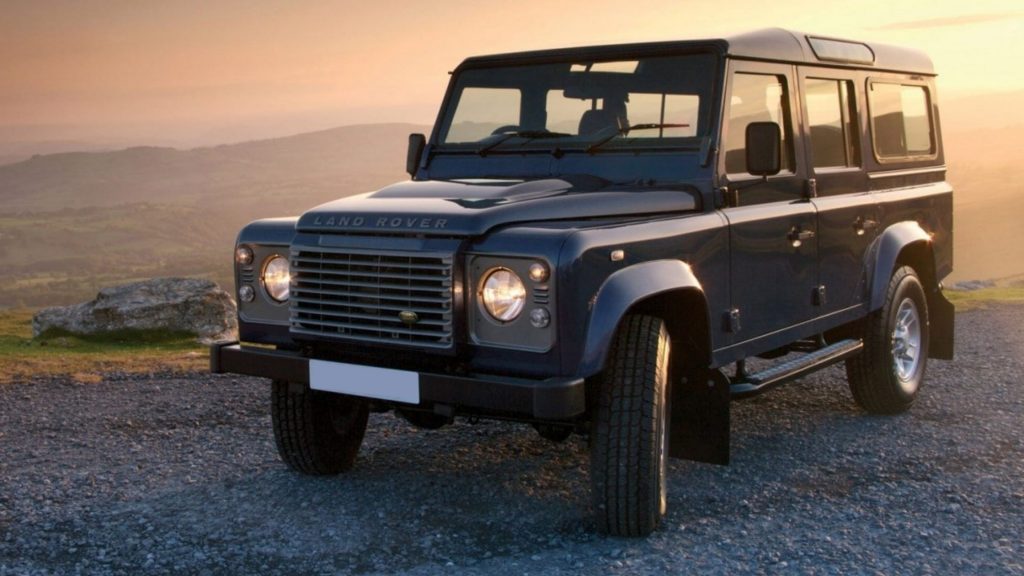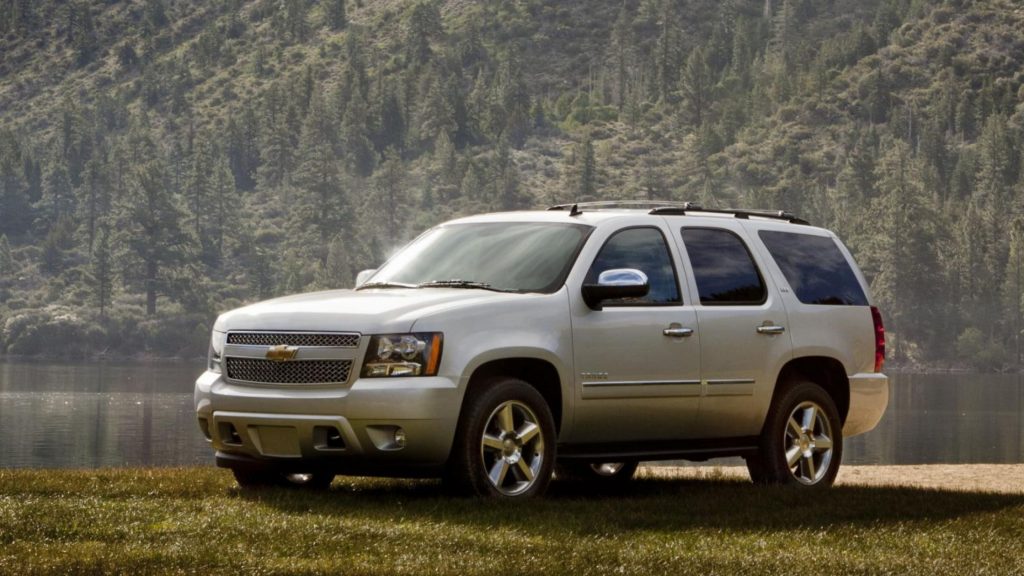In late 1984 the revolutionary Toyota 4Runner, built from the bare bones of Toyota Hilux and Trekker, made its first debut in the American truck market.
From 1984 till the present, the 4Runner has had 4 successful generations and is currently on the 5th. The 4Runner’s unique name is just a combination of the words “4-wheel drive” and “off-road runner.”
Also, it isn’t fair to not mention that people coincidently got introduced to the ubiquitous phrase “Sport Utility Vehicle” (SUV) in 1986, just when Toyota marketed their 4Runner as an SUV.
Fast forward to 2021, the 4Runner is the paradigm of its class and one of the very rare “pure-bred” SUVs. You’ll see why soon.
In this article, we’ll be breaking down the top best model years for Overlanding expeditions and off-roading, some hits and misses of the 4Runner, and a complete overland build example.
Models
| Model | Years | Engine | BHP | Torque (lb-ft) | MPG (city/hwy) |
|---|---|---|---|---|---|
| SR5 V6 | 1995 | 3.0 Liter V6 | 150 @ 4800 RPM | 180 @ 3400 RPM | 15 / 19 |
| Limited V6 | 1999 | 3.4 Liter V6 | 183 @ 4800 RPM | 217 @ 3600 RPM | 16 / 19 |
| SR5 | 2002 | 3.4 Liter V6 | 183 @ 4800 RPM | 271 @ 3600 RPM | 16 / 19 |
| SR5 V8 | 2005 | 4.7 Liter V8 | 270 @ 5400 RPM | 330 @ 3400 RPM | 16 / 19 |
| Limited V-8 | 2008 | 4.7 Liter V8 | 260 @ 5400 RPM | 306 @ 3400 RPM | 14 / 17 |
| Trial Premium | 2014 | 4.0 Liter V6 | 270 hp @ 5600 RPM | 278 @ 4400 RPM | 17 / 22 |
| TRD Off-Road | 2019 | 4.0 Liter V6 | 270 @ 5600 RPM | 278 @ 4400 RPM | 17 / 20 |
| TRD Pro | 2020 | 3.4 Liter V6 | 270 @ 5600 RPM | 278 @ 4400 RPM | 16 / 19 |
Costs
★★★★☆
Purchasing Cost
Speaking in the sense of buying a 4Runner that can guarantee you moderate off-road capabilities, you will be able to easily spot deals in the range of $8900 – $50470.
Yes, it can go as low as $9K for a 2005 4Runner and as high as $50K for a 2021 4Runner TRD Pro. Take my word with a grain of salt but the TRD Pro is overly expensive.
Still, if you’ve got the budget, go for it! The reason is that 4Runners have one of the highest resale values in the truck market.
Though the industry average 5-year depreciation rate for any vehicle is 49%, the 4Runner has it at just 38.5%. What makes this even more prominent is that according to KBB’s study, the 4Runner is currently in the 5th position for best vehicle resale value throughout the United States.
Maintenance Cost
The 4Runner doesn’t really spark many severe or urgent repair needs for most owners as it is known to be unbreakable under any condition. Based on RepairPal’s studies, the average maintenance cost of a 4Runner is only $514 per year – a little less than its fellow competitors.
One of the major tradeoffs is its fuel-efficiency which is not impressive at all. Even the latest models have a combined MPG of 18 only so be ready to calculate fuel costs in advance if you’re onto a long journey.
Reliability
★★★★☆
Reliability is a key factor to be taken into consideration when looking for a new or used vehicle. The Toyota 4Runner is highly reliable in all possible aspects – but there’s a hook to some specific model years.
So far, the 5th gen 4Runners (2010-present) all have 5 out of 5 stars in reliability except the 2015 model that got a 4 star. Similarly, the other 2 model years to refrain from are 2003 and 2004.
These two are on the list for having an excessive frame and undercarriage rust issues which caused notable damages to the metal components. Not that they’re “bad,” it’s just that these were not on par with Toyota’s usual full-on standards.
Apart from these issues, all other models can guarantee you 6-digit mileage figures for sure.
Parts
★★★★☆
Accessibility
Due to 4Runner’s 3 decades of durability and high reputation among customers, there is a huge market for accessing spare parts for your vehicle.
Most parts stores should have 4Runner parts in stock, and if they don’t it should only take 1-3 days to get in stock.
Aftermarket Upgrades
While 4Runners might not be as heavily upgraded as the Taco, there is still a strong support for aftermarket upgrades. It’s not as upgradable as a Jeep Wrangler but there are still plenty of mods out there for kitting out the 4Runner for overlanding.
Storage
★★★★☆
Toyota is extremely generous with the 4Runner’s interior dimensions and cargo space. You’ll get to choose from 3 different cargo area configurations; an empty cargo space, a sliding rear cargo deck, or a third row of seats.
This way, the 4Runner caters to all sorts of buyers, including holders who buy it just for the liking and adventure seekers looking for some serious off-roading or Overlanding.
Since this is all about Overlanding, the sliding deck option would be the most useful as it provides some extra space for cooking utilities. The simple interior, though outdated, is very spacious in terms of legroom, headroom, and seating space.
SR5 V6 (1999)
| Overall Length | 178.7″ |
| Overall Width | 70.9″ |
| Wheelbase | 105.3″ |
| Unladen Height | 69.3″ |
| Unladen Weight | 3600 – 3885 lbs |
| Gross Vehicle Weight | 5250 lbs |
4Runner Trial Premium (2014)
| Overall Length | 189.9″ |
| Overall Width | 75.8″ |
| Wheelbase | 109.8″ |
| Unladen Height | 74.2″ |
| Unladen Weight | 4750 lbs |
| Gross Vehicle Weight | 6300 lbs |
4Runner TRD Off-Road (2019)
| Overall Length | 191.3″ |
| Overall Width | 75.8″ |
| Wheelbase | 109.8″ |
| Unladen Height | 71.5″ |
| Unladen Weight | 4750 lbs |
| Gross Vehicle Weight | 6300 lbs |
4Runner TRD Pro (2020)
| Overall Length | 191.3″ |
| Overall Width | 75.8″ |
| Wheelbase | 109.8″ |
| Unladen Height | 72.0″ |
| Unladen Weight | 4750 lbs |
| Gross Vehicle Weight | 6300 lbs |
Comfort
★★☆☆☆
Since the 4Runner is a mix of off-road ruggedness and utilitarian features, it is reasonable not to have car-like handling. Compared to its rival vehicles, which offer smoother rides, the 4Runner gives a bouncy feel.
Though comfort is not the top priority, it is essential to mention that the top-tier trims like the Limited, Off-Road Premium and TRD Pro have enhanced comfort features like SofTex seats, power moon roof (optional), and more.
Other interior features are much outdated in technological advancements. Though Toyota is trying to incorporate the latest tech features into 4Runner, it still somehow lags behind its competitors.
For example, you won’t be able to find many highly commendable comfort differences between a 2010 4Runner SR5 and a 2021 TRD Pro—even with a gap of 11 long years.
Safety
★★★★☆
In recent years the 4Runner has been scoring a 4 out of 5-star rating with the National Highway Traffic Safety Administration and some mixed ratings with the IIHS.
Toyota now has standardized safety features even in the base models, including forward collision warning, pedestrian detection, adaptive cruise control, etc., as part of its Safety Sense-P suite driver-assistance features.
Another recent update is the Kinetic Dynamics Suspension System (KDSS) which is specially targeted at improving the 4Runner’s off-road maneuvering (only on some trims).
The KDSS is to auto disconnect SUV’s stabilizer bar or anti-sway bar, limiting the wheel articulation – something that isn’t likable with off-roaders. The KDSS uses hydraulics to do this, which in turn softens the suspension and provides better on-road and off-road handling.
Off-Road
★★★☆☆
At the start, the 4Runner was mentioned as a “pure-bred.” That’s because it is one of the very few truck-based body-on-frame SUVs available now, holding up to the real meaning of their name “Sports Utility Vehicle.” Most SUVs are now built on a unibody frame instead.
| Basis | SR5 V6 | Trail Premium | TRD Off-Road | TRD Pro |
|---|---|---|---|---|
| Break-over Angle (°) | 27 | 24 | 19.8 | 19.8 |
| Approach Angle (°) | 36 | 33 | 33 | 33 |
| Departure Angle (°) | 29 | 26 | 26 | 26 |
| Min. Ground Clearance (inch) | 11 | 9.6 | 9.6 | 9.6 |
If you’re looking for a powerful off-the-grid experience, the fourth generation might be your perfect catch. It is the only generation to have V8 engines. But the 5th gen’s TRD Pro and TRD Off-Road premium are not to be underestimated as they come with really robust, never before 4Runner features too.
Toyota 4Runner Overland Build Example
Equipment
- Roof Rack: Front Runner Slimline II roof rack kit
- Tent: FSR High Country 80” Premium rooftop tent
- Fridge: Dometic WAECO CF-18
- Compressor: Smittybilt 2781 5.65 CFM Universal Compressor
- Water Storage: WaterPORT Weekender 8.0 gallon water tank
Drivetrain
- Tires: Goodyear Wrangler DuraTrac Radial Tires – 255/75R17 115S
- Wheels: Turbomac HD Block Bronze
- Suspension: Bilstein Bypass Shocks, Deaver custom expedition leaf springs and, SPC upper control arms
- Rear Differential: ToyTec GPTOY1 E-locker
- Front Differential: ARB Front Differential Air Locker
Armor
- Front Bumper: Southern Style Off-Road Slimline Hybrid front bumper
- Rear Bumper: CBI rear bumper
- Rock Slider: Shrockworks rock sliders
Recovery
- Recovery Boards: ARB TREDPROBB vehicle recovery boards
- Winch: WARN VR10 winch
- Jack: Craftsman 3 Ton Jack combo
- Shovel: Shovel Tec Overland shovel
- Recovery Kit: GearAmerica Off-Road Recovery kit
- Tire Deflator: Staun tire deflator
- Tire Repair: Trail Gear Tire Plug kit
Lighting
- Light Bar: Auxbeam 42” Curved Cross Series light bar
- Rock Lights: Aura Quantum rock lights kit
- Reverse Lights: Diode Dynamics Tail as Turn reverse lights
- Camp Lights: Rigid Industries Scene LED Light – 86620
- Interior Lights: Hard Mount Dual Level Light – National Luna
Electrical
- Power: Jackery Explorer 1500
- Solar: Jackery SolarSaga 100W x 4
- Battery: Genesis Offroad Universal Dual Battery Kit
Conclusion
The 4Runner has always been hyped as the ultimate off-road mastery machine and was the number one selling SUVs class for quite some time.
So any pick of the bunch is a win-win scenario for you. It all comes down to your budget and what you’ve already set your heart on.
Just be sure to ensure a full inspection when buying a second-hand vehicle as Toyota has not yet done a recall for the 4Runner as it did for the Tacoma and Tundra for the excessive rusting issue.
If you’re down for the latest models of 4Runner, maybe you can wait a little longer as the all-new, redesigned 6th generation 4Runner is expected to be unveiled for the 2022 model year! We’re waiting too.
- Tips and tricks For Setting Up Camp Like a Pro - September 11, 2023
- The Best Multi-Tools for Overlanding Adventures - August 25, 2023
- Off-Road Navigation Tips for Overlanders - August 13, 2023



